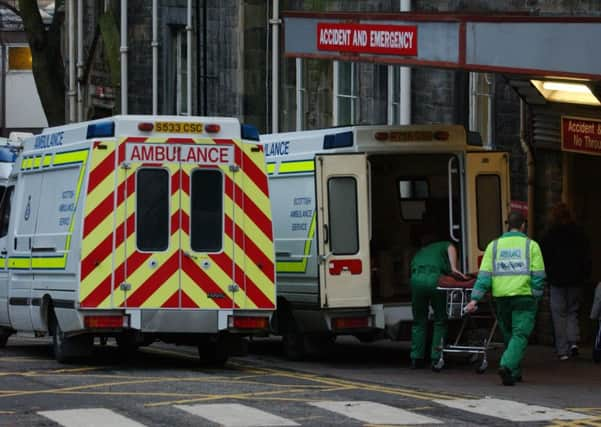Seven health boards miss A&E targets


A total of 93.9 per cent of all patients were seen and either admitted, transferred or discharged within four hours in the week ending November 1, below the Scottish Government’s interim target of 95 per cent.
NHS Ayrshire and Arran had the poorest performance on 87.6 per cent, while Borders, Fife, Forth Valley, Greater Glasgow and Clyde, Lanarkshire and Lothian health boards also missed the standard.
Advertisement
Hide AdAdvertisement
Hide AdThe lowest ranked accident and emergency site was University Hospital Ayr (83.7 per cent), with Glasgow’s Queen Elizabeth University Hospital also lagging on 86 per cent.
Performance at Scotland’s newest hospital has improved from a record low of 77 per cent in October but has consistently fallen below the 95 per cent target.
Labour’s public services spokeswoman Jackie Baillie MSP said: “The problems at this £850 million flagship hospital are now quite clear.
“It is seriously struggling to hit A&E targets in the autumn, which does not bode well for patient care in the winter.
“We are hearing stories of staff in tears and sick with stress. This is not what our NHS in 2015 should look like.
“Scottish Labour asked SNP Health Minister Shona Robison back in May to pause the transfer of patients and consider issues of capacity. Our pleas fell on deaf ears.”
Ms Robison said the latest national figure was three percentage points higher than the same period last year.
She said: “As we prepare to head into winter we have been working closely with health boards and stakeholders to put further measures in place.
Advertisement
Hide AdAdvertisement
Hide Ad“This includes our winter guidance for boards, which was issued two months earlier this year compared to previous years, and additional investment of £10.7 million which will help ease pressure.
“In September we circulated guidance to boards on eliminating crowding and long waits in A&E, by ensuring best practice escalation measures are in place in each hospital.
“In addition, the national unscheduled care team continues to work closely with a number of local teams across Scotland, to monitor performance and progress the six essential actions, which aim to minimise long waits in A&E and assessment units by improving patient flow throughout all areas of the hospital and in the community.
“I am also receiving regular updates from sites experiencing challenges to ensure that progress is being made to drive down waiting times.”